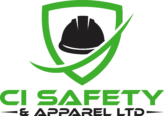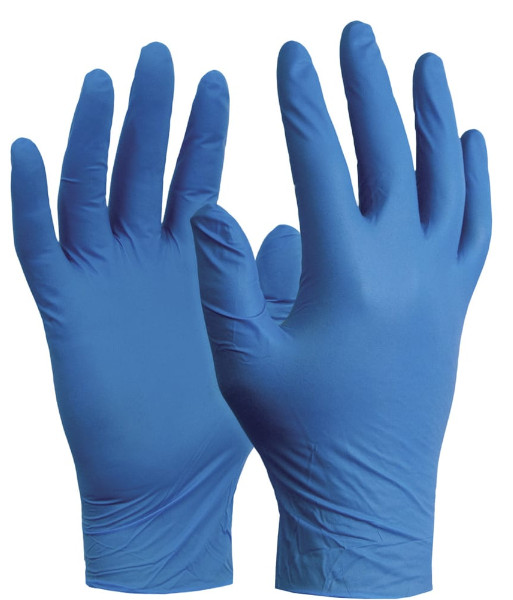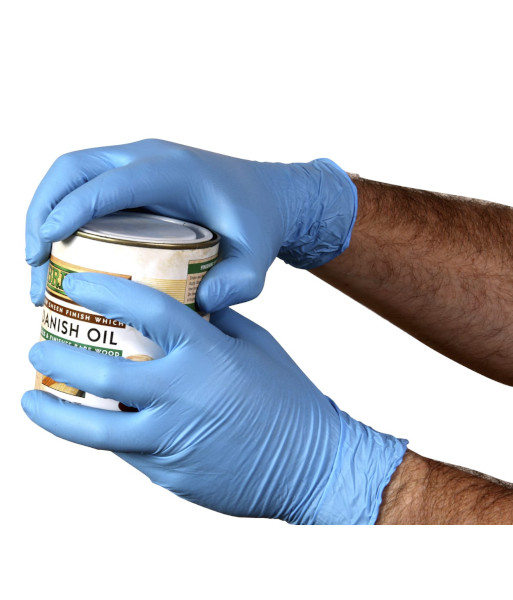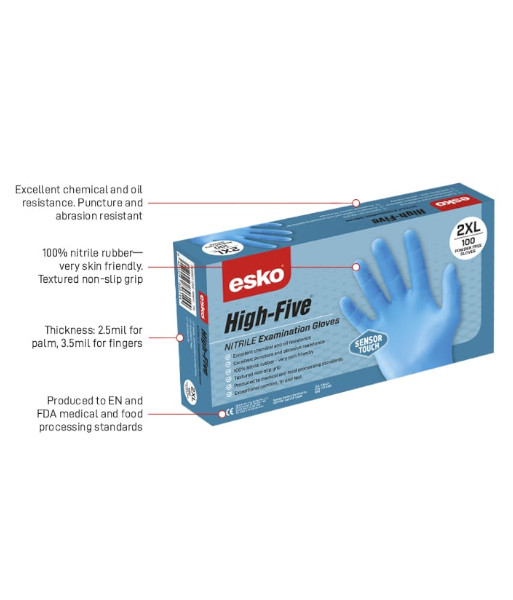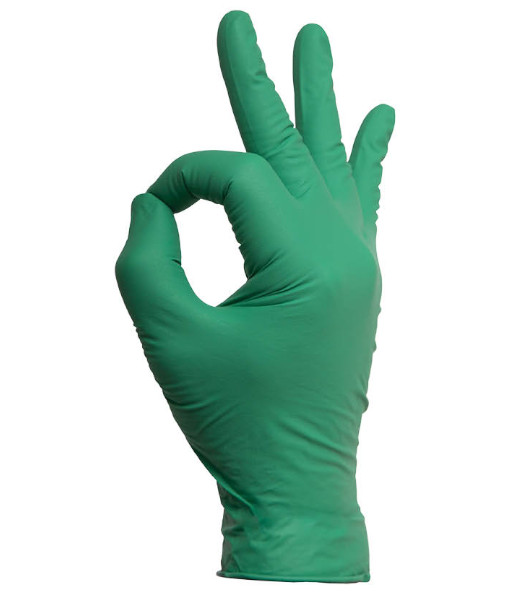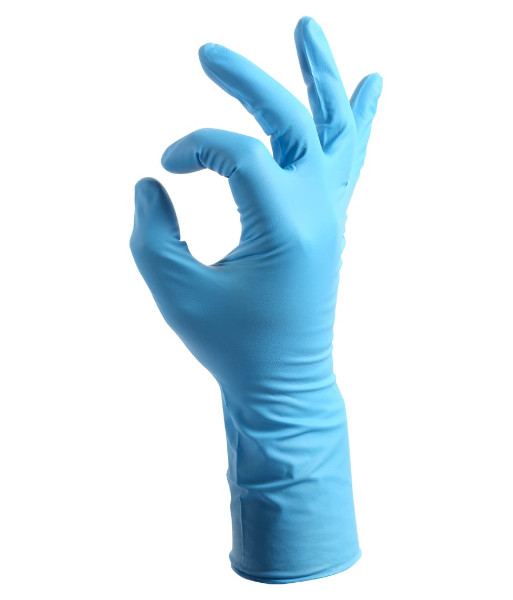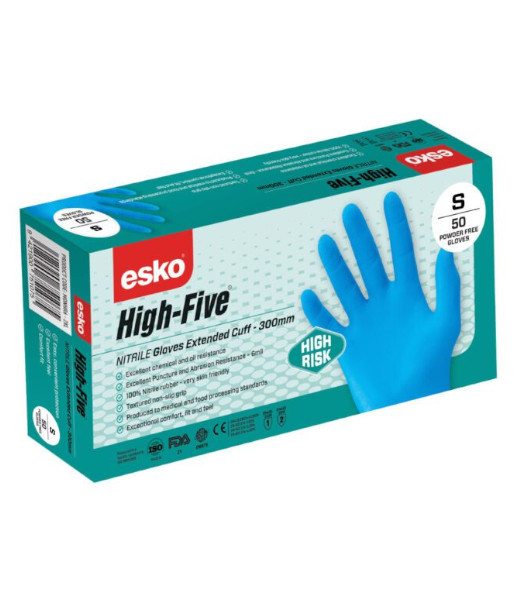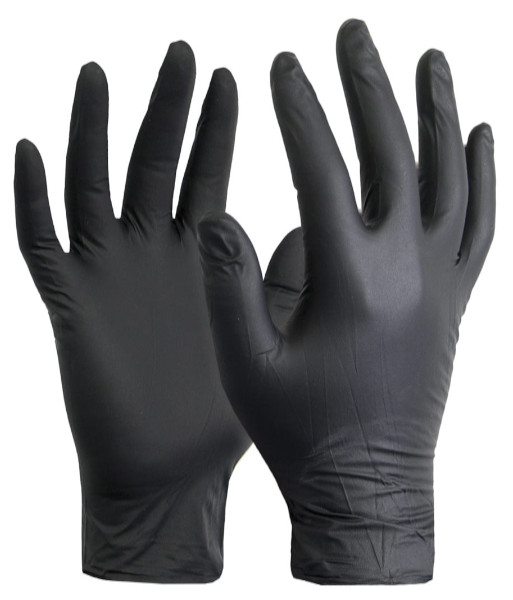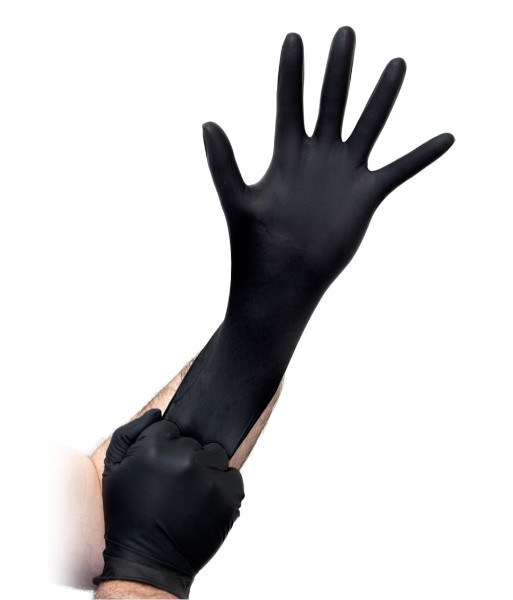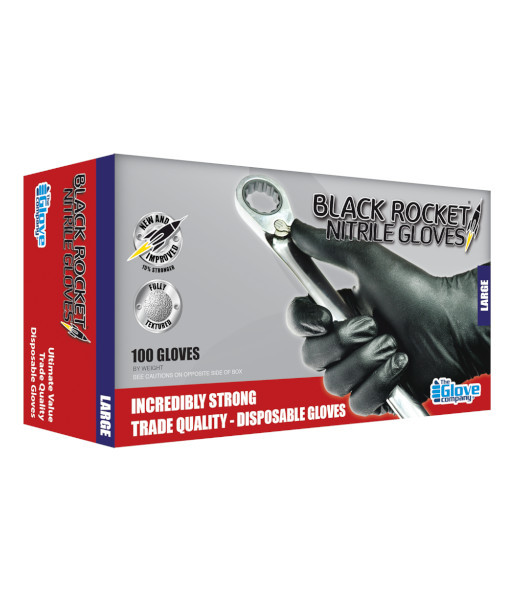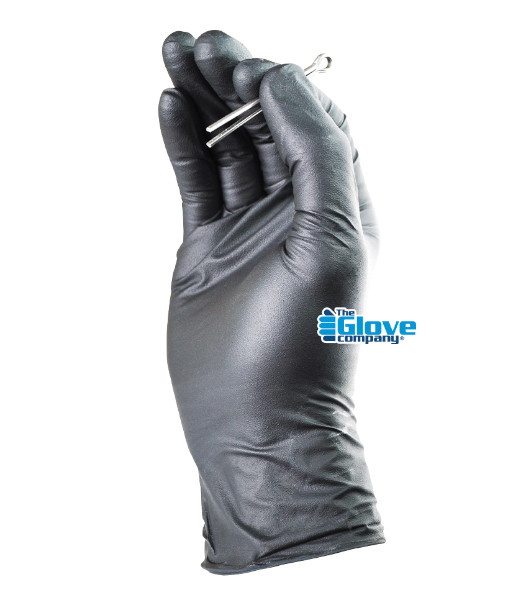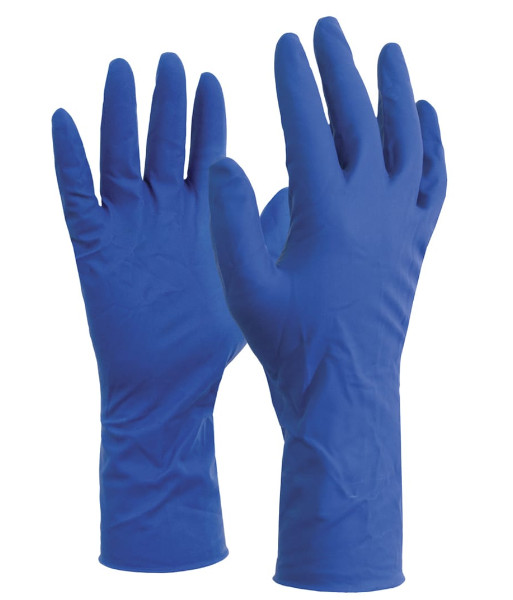
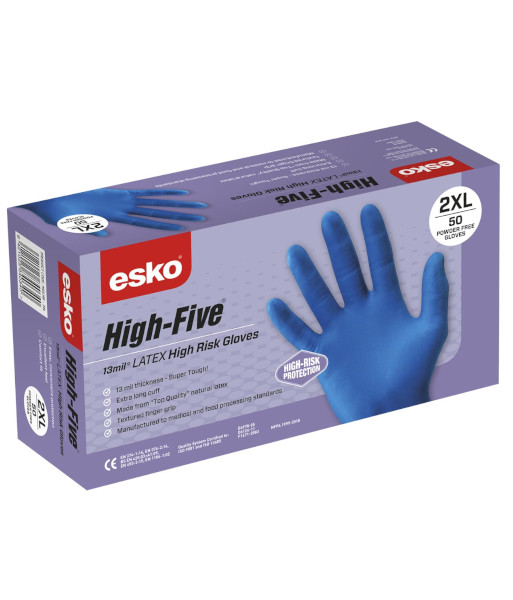
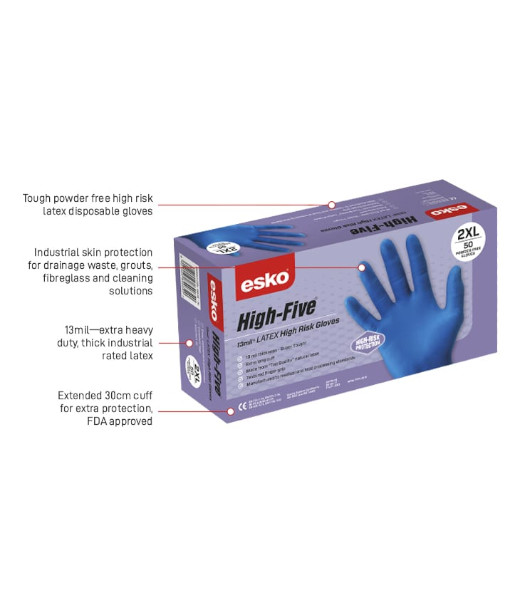
MDLHR Esko High Five High Risk Latex Disposable Gloves, Sizes M to 2XL (50 per box)
$33.35
FEATURES
- Tough powder-free high risk latex disposable gloves
- Extended 30cm cuff for extra protection
- Industrial skin protection for drainage waste, grouts, fibreglass and cleaning solutions
- Excellent dexterity, close fitting
- 13mil—extra heavy duty, thick industrial rated latex
- 50pc/box
- Sizes M–2XL
- Click to download Esko’s chemical resistance glove selection guide. Recommendations are advisory. The suitability of a product for a specific application must be determined by testing by the user.
CERTIFICATIONS
- EN 420:03+A1:9 General requirements for protective gloves.
- EN 1186 Glass/fork symbol gives traceability and identification of materials intended to come into contact with food. Confirms that these products will not contaminate food with hazardous substances.
- FDA 21 Overarching regulations for production, testing, labeling and advertising of food and drugs within the United States.
- CFR 177.2600 Rubber articles intended for repeated use—lists permitted elastomers, vulcanization materials, accelerators, retarders, activators, antioxidants, plasticizers, fillers, emulsifiers, and other additives, and sets extraction limits for food contact.
- EN 374-1 Indicates that the product meets permeation standards for protective gloves, with permeation resistance of (Type A) at least 30 minutes to 6 test chemicals, (Type B) at least 30 minutes to 3 chemicals and (Type C) at least 10 minutes to 1 chemical. Letters under the shield identify the chemicals.
- EN 374-2 Indicates that the product meets penetration standards for protective gloves, against penetration by dangerous chemicals and micro-organisms. A sample glove shall not leak water or air when tested for closures, porosity, seams, pinholes, leaks or imperfections of the glove by either inflating with air or filling with water.
- D6124-11 Indicates that the product meets ASTM standards for residual powder on medical gloves, ≦10mg/dm2.
- D6978-05 Indicates that the product meets ASTM standards for resistance of medical gloves to permeation by at least 9 chemotherapy drugs. A more stringent and specialised test than the EN374 test.
- F1671 Indicates that the product meets ASTM standards for resistance of materials to penetration by blood-borne pathogens.
USES
- Plumbing and sewerage
- Hazardous and biological waste
- Law enforcement
- Emergency services
- Food processing
- Mechanical
- Cleaning
- Hygiene
- Light duty chemical handling
- Printing
- Tattooists
SIZES
- M, L, XL, 2XL
